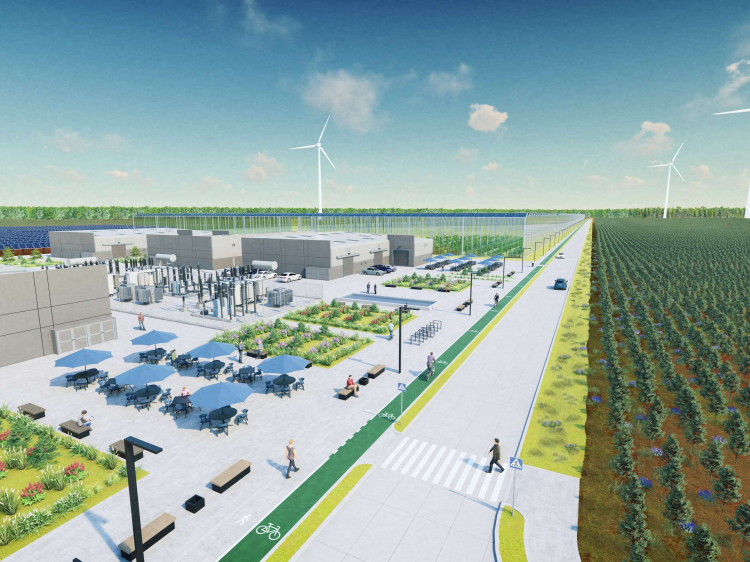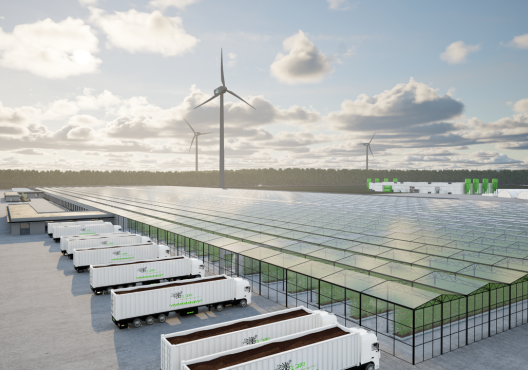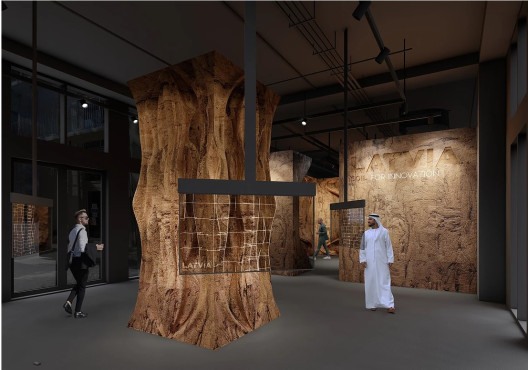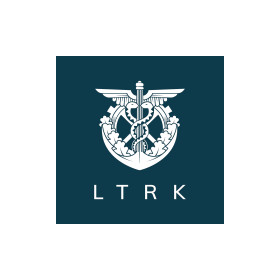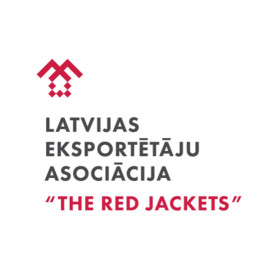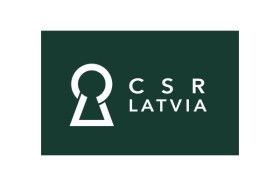28 October 2021 – the approval by the Jelgava national city and Jelgava Municipality local authorities for the construction of Laflora wind farm is a huge step forward for the development of Laflora peat extraction and processing company and the region, retaining 290 existing jobs and creating at least 120 new and sustainable ones, as well as ensuring quality of life for the local community. The wind farm will enable the creation of a green industrial zone that will act as a catalyst for the development of the Zemgale region. The investment in the creation of the wind farm and the industrial zone will reach approximately 170 million EUR. The windfarm is scheduled to begin generating electric power in 2025. Laflora wind farm project will contribute significantly to reducing electricity prices in the country, to the benefit of each resident of Latvia, thus making the European Green Deal more attractive.
Laflora wind farm – the catalyst for the development of the Zemgale region
The approval vote of the Jelgava Municipality council and Jelgava national city council for the construction of the Laflora wind farm in the 763-hectare Kaigu peat mire is a green light not only for the production of renewable energy with the total capacity of 90 MW, which equals 5% of Latvia's total annual electricity consumption, but also for the ambitious climate neutrality goals of the European Green Deal.
Thanks to the wind farm and the energy it produces, the Kaigu mire will be reborn in a new form, not only creating an oasis of renewable energy sources, but also recultivating the developed peat extraction areas and compensating for emissions created by the core business of the company, enabling continued production of peat products with added value in a more sustainable way. The industrial zone of the Kaigu mire will be complemented by vegetable, forest saplings and ornamental crops, emphasising the opportunities offered by Latvian horticulture and forestry sectors and promoting local consumption of peat. Thanks to the excellent cooperation with Jelgava city and municipality, the industrial zone could become a regional business infrastructure hub, attracting businesses with high energy consumption in manufacturing processes, enabling them to achieve climate-neutral production, with the priority given to production facilities based on circular economy. Options to produce renewable or green hydrogen in the future are also being assessed. Municipalities would be able to use it for the development of their infrastructure, including the development of a new industrial zone at the former Jelgava airfield.
“This project is important for the whole region of Zemgale and will contribute to the socio-economic development of the region, where the quality of life and sustainable jobs are some of the key values. The Laflora wind farm and the green industrial zone are all about the production of renewable energy as a basis for sustainable development of the company, region and country alongside useful utilisation – investing in self-consumption, food crops and smart energy usage in synergy with the state and private companies, says Uldis Ameriks, the Chairman of the Board of Laflora.
Municipalities are in favour of the ambitious idea
Jelgava Municipality council chairman Ziedonis Caune sincerely appreciates the implementation of the Laflora wind farm project, emphasising its role in the growth of the whole region and the potential not only in terms of the energy produced and available for sale, but also in the overall context of the industrial park development. “I believe that many investors, companies that are waiting for the Laflora project to start, are looking forward to cooperation in development of their own businesses in the adjacent areas. This means that the potential of Līvbērze region is nowhere near explored and may change in the coming years. The municipality certainly welcomes the honest dialogue conducted by the entrepreneur with all stakeholders – the public, the local government, the cooperation partners, so that the consultation on this project really results in a project accepted and supported by the public.”
“Transition to climate neutrality is a highly discussed topic in Europe, in Latvia and in Jelgava. Jelgava was one of the first municipalities in Latvia to sign the European Union Covenant of Mayors that included a commitment to reduce CO2 emissions by at least 20% by 2020, thus announcing the implementation of the green energy idea in the city life. The monitoring carried out in 2020 shows that the amount of CO2 emissions in our city has decreased by 28%” says Jelgava city mayor Andris Rāviņš. Jelgava has almost fully switched to green energy for heating, mainly using woodchips for district heating, rather than gas as the case was in the past. “We are aware that environmentally-friendly transportation will increasingly become a part of the urban life, therefore one of our key tasks is the development of hydrogen technology. Therefore the idea of Laflora to develop a wind farm close to the city is seen as another step towards green energy and we are looking forward to successful cooperation that could help attract investors for the development of the airfield area.”
International conference dedicated to the green industrial zone
In the summer of 2022, Laflora plans to hold an international conference for potential stakeholders, partners and investors dedicated to the development of the green zone at Kaigu mire in order to present the industrial zone project and report on the wind farm construction process. “Interest in the project is immense and cooperation with a number of potential investors is currently being considered. The national significance of the project is affirmed by the fact that, since the early evaluation stage, the international Three Seas Initiative Investment Fund recognised the Laflora wind farm as one of the priority projects in Latvia,” says Uldis Ameriks, the Chairman of the Board of Laflora.
About the wind farm and the green industrial zone:
- Short film about Laflora wind farm: HERE.
- Wind farm visualisations available: HERE.
- Short film about the industrial zone in Kaigu mire: HERE.
- The Laflora wind farm is being created in the 763-hectare peat extraction zone of Kaigu mire in Līvbērze parish, which belongs to Laflora and where the extraction of peat is to end in the coming years.
- It is planned to erect 22 wind powerplants in the Kaigu mire and the surrounding woodland – 16 of those in the developed peat fields and six in the adjacent forest expanse, producing a total of 300,000 MWh annually.
- The wind farm will save 112,000 tonnes of CO2 compared to electric power production by a natural gas cogeneration plant.
- CO2 savings generated by the wind farm will amount to 2.8 million tonnes of CO2 by 2050.
- The planned investments in the creation of Laflora wind farm amount to 120 million EUR, with further 50 million EUR to be invested in the creation of the green industrial zone.
- The windfarm is scheduled to begin generating electric power in 2025.
About Laflora:
- Laflora is one of the largest peat production and processing enterprises in Latvia, producing peat substrates for horticulture, forestry and agriculture since 1995.
- The company employs 290 people.
- Turnover in 2020: 22.2 million EUR.
- Taxes paid in 2020: 3.4 million EUR.

